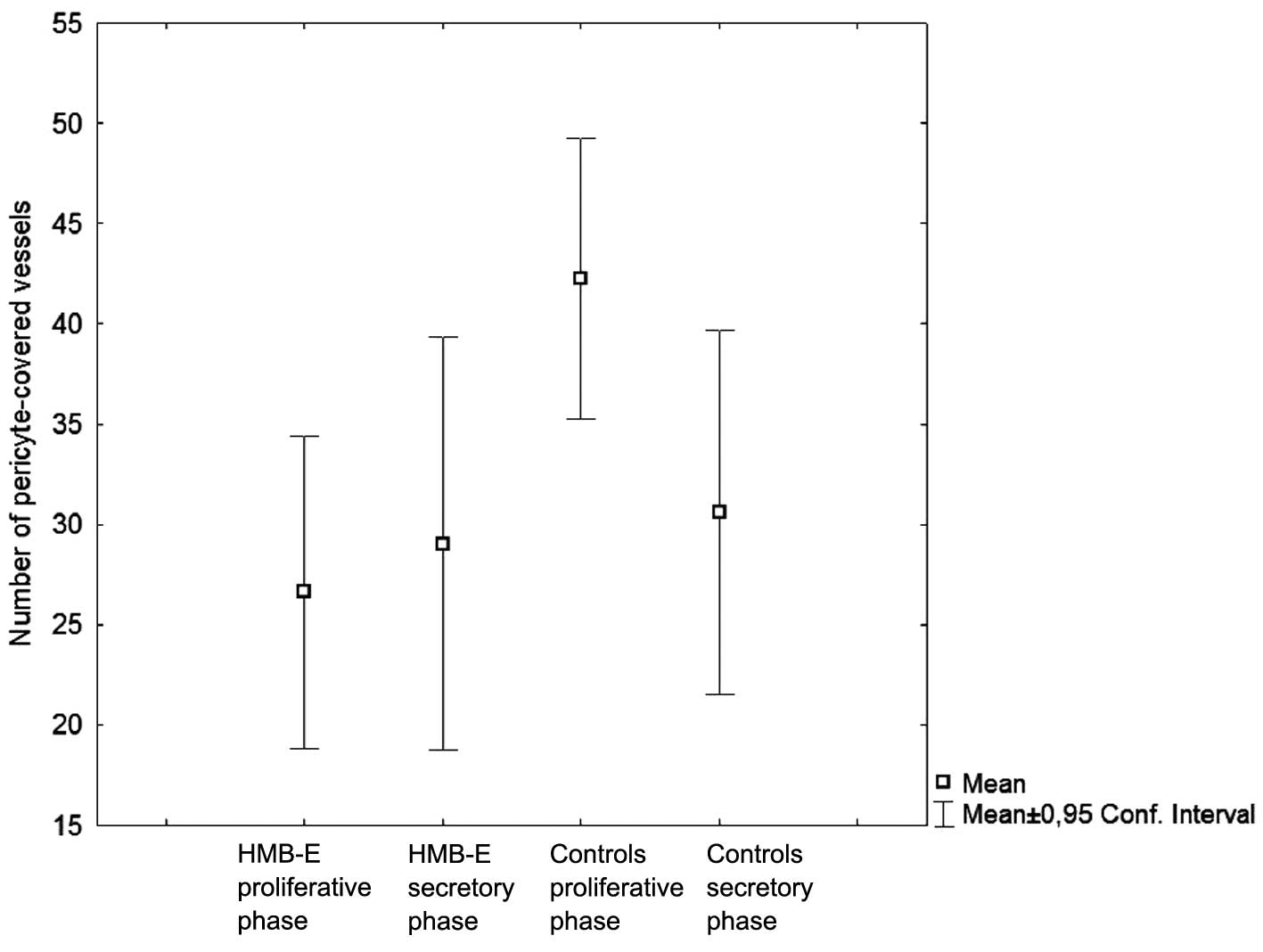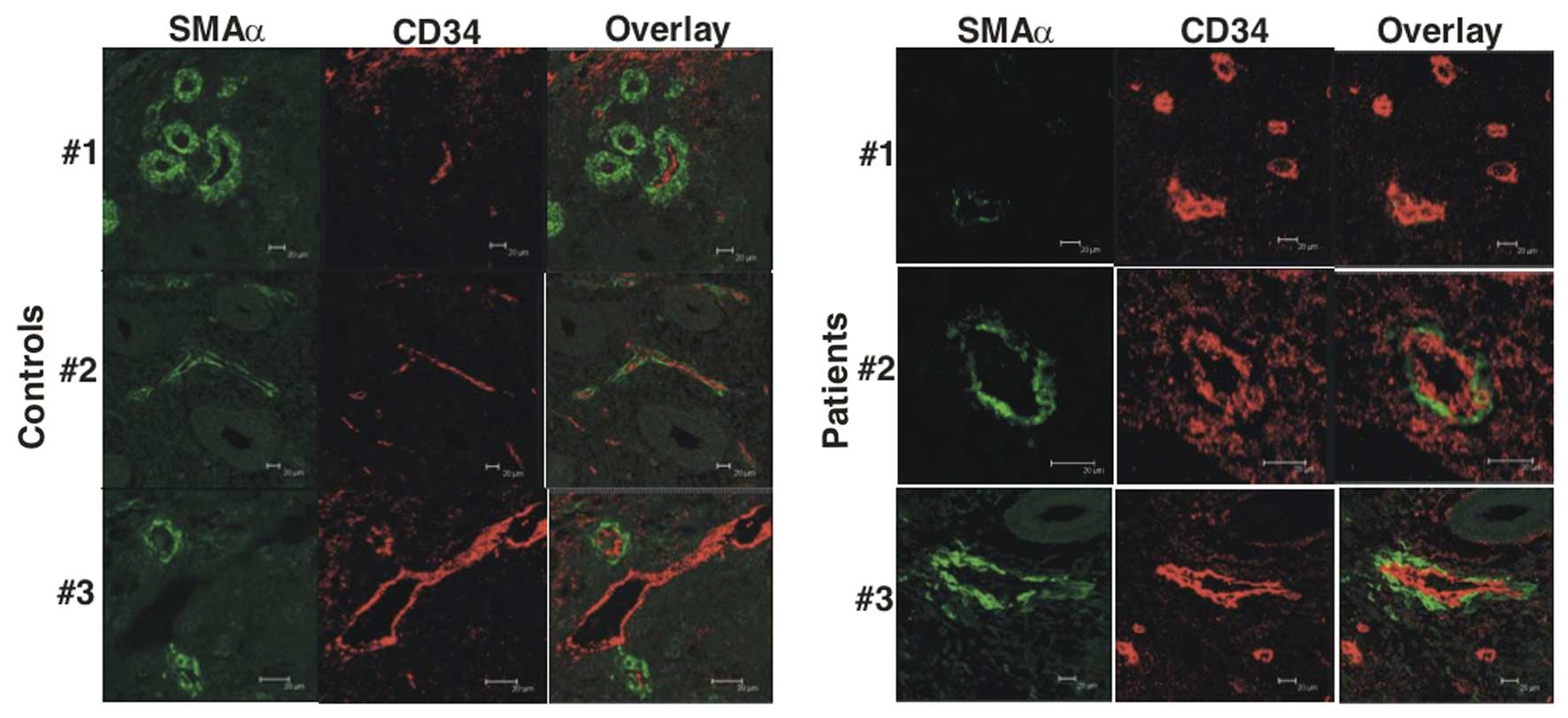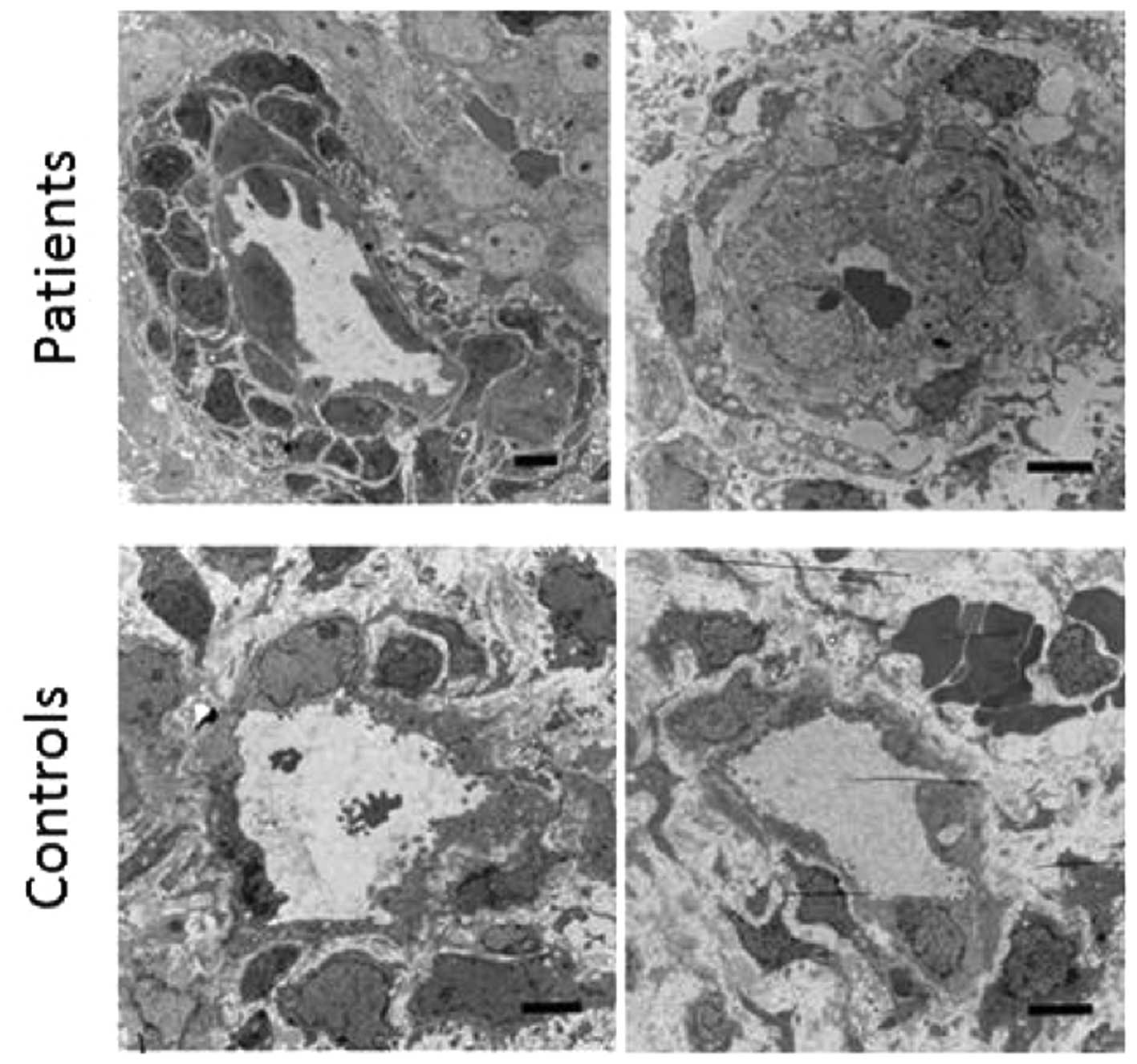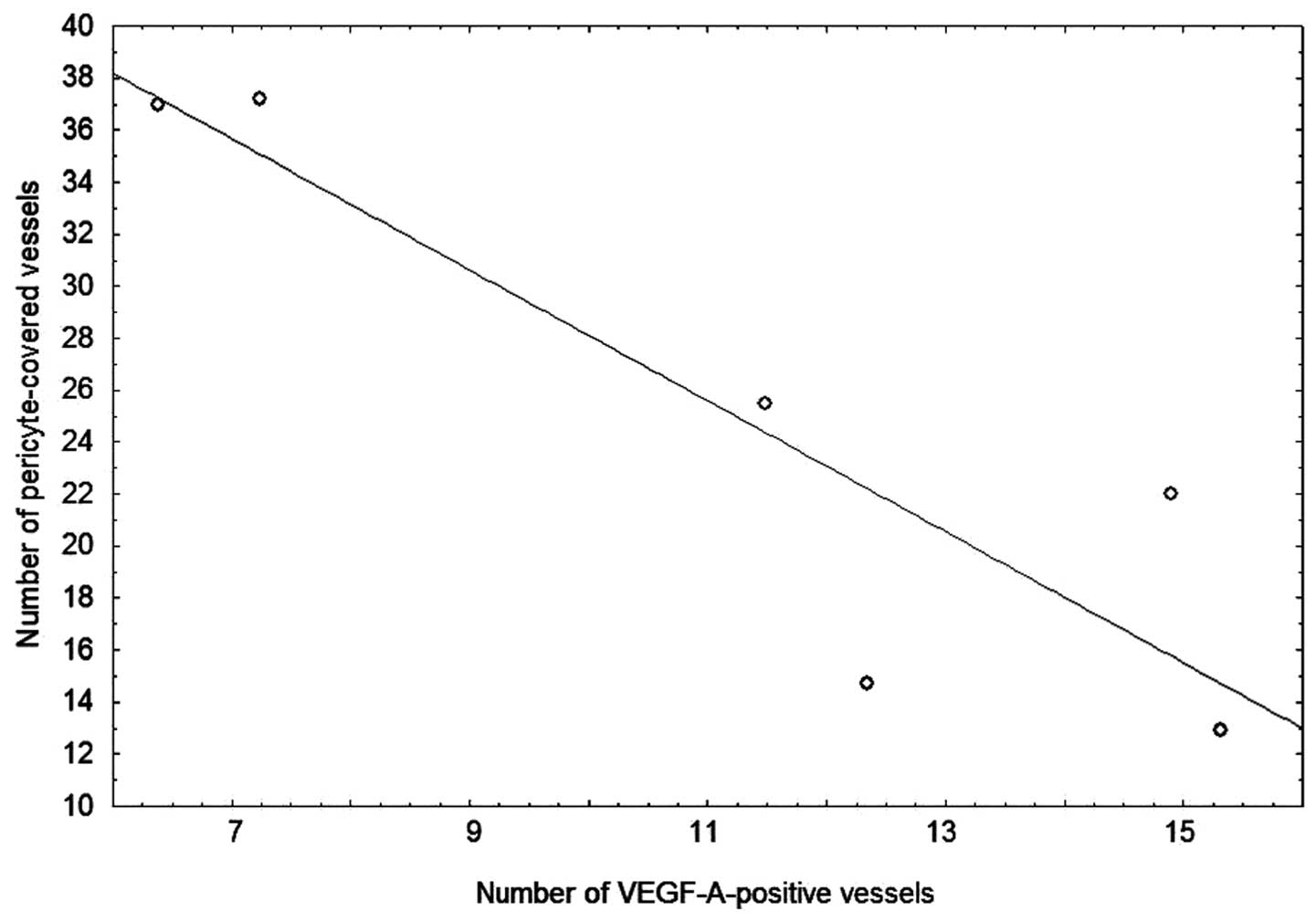|
1
|
Hallberg L, Högdahl AM, Nilsson L and Rybo
G: Menstrual blood loss - a population study. Variation at
different ages and attempts to define normality. Acta Obstet
Gynecol Scand. 45:320–351. 1966. View Article : Google Scholar
|
|
2
|
Gath D, Osborn M, Bungay G, Iles S, Day A,
Bond A and Passingham C: Psychiatric disorder and gynaecological
symptoms in middle aged women: a community survey. Br Med J (Clin
Res Ed). 294:213–218. 1987. View Article : Google Scholar
|
|
3
|
Salamonsen LA, Kovacs GT and Findlay JK:
Current concepts of the mechanisms of menstruation. Baillieres Best
Pract Res Clin Obstet Gynaecol. 13:161–179. 1999. View Article : Google Scholar
|
|
4
|
Mints M, Blomgren B and Palmblad J:
Expression of vascular endothelial growth factor receptor-3 in the
endometrium in menorrhagia. Int J Mol Med. 19:909–913.
2007.PubMed/NCBI
|
|
5
|
Mints M, Blomgren B and Palmblad J:
Expression of angiopoietins 1, 2 and their common receptor tie-2 in
relation to the size of endothelial lining gaps and expression of
VEGF and VEGF receptors in idiopathic menorrhagia. Fertil Steril.
94:701–707. 2010. View Article : Google Scholar
|
|
6
|
Mints M, Hultenby K, Zetterberg E,
Blomgren B, Falconer C, Rogers R and Palmblad J: Wall
discontinuities and increased expression of vascular endothelial
growth factor-A and vascular endothelial growth factor receptors 1
and 2 in endometrial blood vessels of women with menorrhagia.
Fertil Steril. 88:691–697. 2007. View Article : Google Scholar : PubMed/NCBI
|
|
7
|
Gerhardt H and Betsholtz C:
Endothelial-pericyte interactions in angiogenesis. Cell Tissue Res.
314:15–23. 2003. View Article : Google Scholar : PubMed/NCBI
|
|
8
|
Hellström M, Kalén M, Lindahl P, Abramsson
A and Betsholtz C: Role of PDGF-B and PDGFR-beta in recruitment of
vascular smooth muscle cells and pericytes during embryonic blood
vessel formation in the mouse. Development. 126:3047–3055.
1999.PubMed/NCBI
|
|
9
|
Levéen P, Pekny M, Gebre-Medhin S, Swolin
B, Larsson E and Betsholtz C: Mice deficient for PDGF B show renal,
cardiovascular, and hematological abnormalities. Genes Dev.
8:1875–1887. 1994. View Article : Google Scholar : PubMed/NCBI
|
|
10
|
Hirschi KK and D’Amore PA: Pericytes in
the microvasculature. Cardiovasc Res. 32:687–698. 1996. View Article : Google Scholar : PubMed/NCBI
|
|
11
|
Hellström M, Gerhardt H, Kalen M, Li X,
Eriksson U, Wolburg H and Betsholtz C: Lack of pericytes leads to
endothelial hyperplasia and abnormal vascular morphogenesis. J Cell
Biol. 153:543–553. 2001. View Article : Google Scholar : PubMed/NCBI
|
|
12
|
Hewett P, Nijjar S, Shams M, Morgan S,
Gupta J and Ahmed A: Down-regulation of angiopoietin-1 expression
in menorrhagia. Am J Pathol. 160:773–780. 2002. View Article : Google Scholar : PubMed/NCBI
|
|
13
|
Higham JM, O’Brien PM and Shaw RW:
Assessment of menstrual blood loss using a pictorial chart. Br J
Obstet Gynaecol. 97:734–739. 1990. View Article : Google Scholar : PubMed/NCBI
|
|
14
|
Mints M, Blomgren B, Falconer C,
Fianu-Jonasson A and Palmblad J: Microvascular density, vascular
endothelial growth factor A, and its receptors in endometrial blood
vessels in patients with menorrhagia. Fertil Steril. 84:692–700.
2005. View Article : Google Scholar : PubMed/NCBI
|
|
15
|
Zetterberg E, Vannucchi AM, Migliaccio AR,
Vainchenker W, Tulliez M, Dickie R, Hasselbalch H, Rogers R and
Palmblad J: Pericyte coverage of abnormal blood vessels in
myelofibrotic bone marrows. Haematologica. 92:597–604. 2007.
View Article : Google Scholar : PubMed/NCBI
|
|
16
|
Förster C1, Mäkela S, Wärri A, Kietz S,
Becker D, Hultenby K, Warner M and Gustafsson JA: Involvement of
estrogen receptor beta in terminal differentiation of mammary gland
epithelium. Proc Natl Acad Sci USA. 99:15578–15583. 2002.
View Article : Google Scholar : PubMed/NCBI
|
|
17
|
Weibel E: Stereological Methods: Practical
methods for biological morphometry. Academic Press; London:
1979
|
|
18
|
Mancuso MR, Davis R, Norberg SM, O’Brien
S, Sennino B, Nakahara T, Yao VJ, Inai T, Brooks P, Freimark B,
Shalinsky DR, Hu-Lowe DD and McDonald DM: Rapid vascular regrowth
in tumors after reversal of VEGF inhibition. J Clin Invest.
116:2610–2621. 2006. View
Article : Google Scholar : PubMed/NCBI
|
|
19
|
Dulmovits BM and Herman IM: Microvascular
remodeling and wound healing: a role for pericytes. Int J Biochem
Cell Biol. 44:1800–1812. 2012. View Article : Google Scholar : PubMed/NCBI
|
|
20
|
Goddard LM and Iruela-Arispe ML: Cellular
and molecular regulation of vascular permeability. Thromb Haemost.
109:407–415. 2013. View Article : Google Scholar : PubMed/NCBI
|
|
21
|
Sims DE and Westfall JA: Analysis of
relationships between pericytes and gas exchange capillaries in
neonatal and mature bovine lungs. Microvasc Res. 25:333–342. 1983.
View Article : Google Scholar : PubMed/NCBI
|
|
22
|
Girling JE and Rogers PA: Recent advances
in endometrial angiogenesis research. Angiogenesis. 8:89–99. 2005.
View Article : Google Scholar : PubMed/NCBI
|
|
23
|
Girling JE, Lederman FL, Walter LM and
Rogers PA: Progesterone, but not estrogen, stimulates vessel
maturation in the mouse endometrium. Endocrinology. 148:5433–5441.
2007. View Article : Google Scholar : PubMed/NCBI
|
|
24
|
Girling JE and Rogers PA: Regulation of
endometrial vascular remodelling: role of the vascular endothelial
growth factor family and the angiopoietin-TIE signalling system.
Reproduction. 138:883–893. 2009. View Article : Google Scholar : PubMed/NCBI
|
|
25
|
Rogers PA, Plunkett D and Affandi B:
Perivascular smooth muscle alphaactin is reduced in the endometrium
of women with progestin-only contraceptive breakthrough bleeding.
Hum Reprod. 15(Suppl 3): S78–S84. 2000. View Article : Google Scholar
|
|
26
|
Greenberg JI, Shields DJ, Barillas SG,
Acevedo LM, Murphy E, Huang J, Scheppke L, Stockmann C, Johnson RS,
Angle N and Cheresh DA: A role for VEGF as a negative regulator of
pericyte function and vessel maturation. Nature. 456:809–813. 2008.
View Article : Google Scholar : PubMed/NCBI
|













